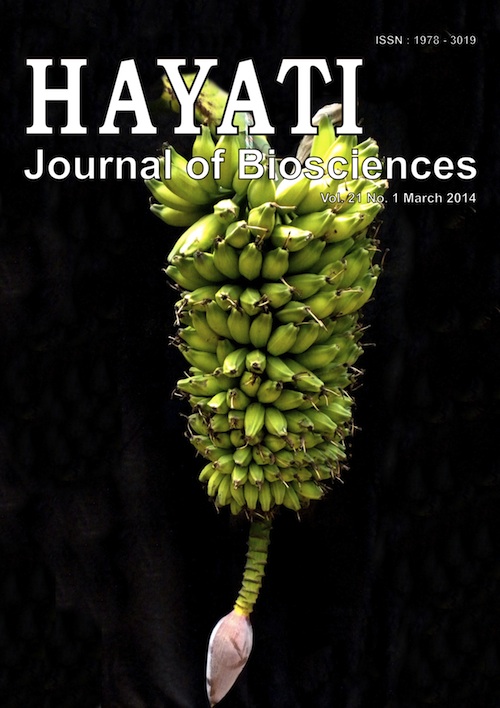Field Adaptation of Some Introduced Wheat (Triticum aestivum L.) Genotypes in Two Altitudes of Tropical Agro-Ecosystem Environment of Indonesia
Abstract
Heat stress is a major environmental factor limiting wheat productivity in tropical regions such as Indonesia. The objective of this study was to investigate the adaptability of introduced wheat genotypes in tropical agro-ecosystems. Sixteen spring wheat genotypes were grown at two different altitudes i.e. low altitude (176 m asl) with an average temperature of 29.8 oC located at Leuwikopo Field Experimental Station, Bogor Agricultural University, Darmaga Bogor and high altitude (1100 m asl) with an average temperature of 20.6 oC at Cipanas Field Experimental Station (Ornamental Crop Research Station), Cianjur, West Java, Indonesia from July to November 2012. Plant height, number of tillers, flag leaf area, leaf angle, days to flowering, spike number per plant, empty spikelet number, grain weight per plant and 100 grain weight were observed following the standard methods. Heat susceptibility index was calculated based on grain weight per plant. The results showed that cultivation at a low altitude, hotter environment remarkably affected wheat growth and yield, as reflected in overall reduction of plant height, reduced number of tillers and leaf area, and ultimately reduced yield and yield components for most genotypes compared to the same measures taken at high altitude in lower temperatures. Plant growth before heading was similar in both locations, but the days to flowering was longer in high altitude than that in low altitude. High temperature stress in low altitude reduced the spike number/plant, grain weight/plant, 100 grain weight and increase number of empty spikelet/spike. Based on our results for heat susceptibility index, six genotypes, namely Sbr, Ymh, Astreb/Cbrd, Astreb/Ningma, H-20 and Nias, were characterized as heat tolerant genotypes.
Downloads
HAYATI J Biosci is an open access journal and the article's license is CC-BY-NC. This license lets others distribute, remix, tweak, and build upon author's work, as long as they credit the original creation. Authors retain copyright and grant the journal/publisher non exclusive publishing rights with the work simultaneously licensed under a https://creativecommons.org/


















.png) IPB University
IPB University Department of Biology
Department of Biology The Indonesian Biological Society
The Indonesian Biological Society 

